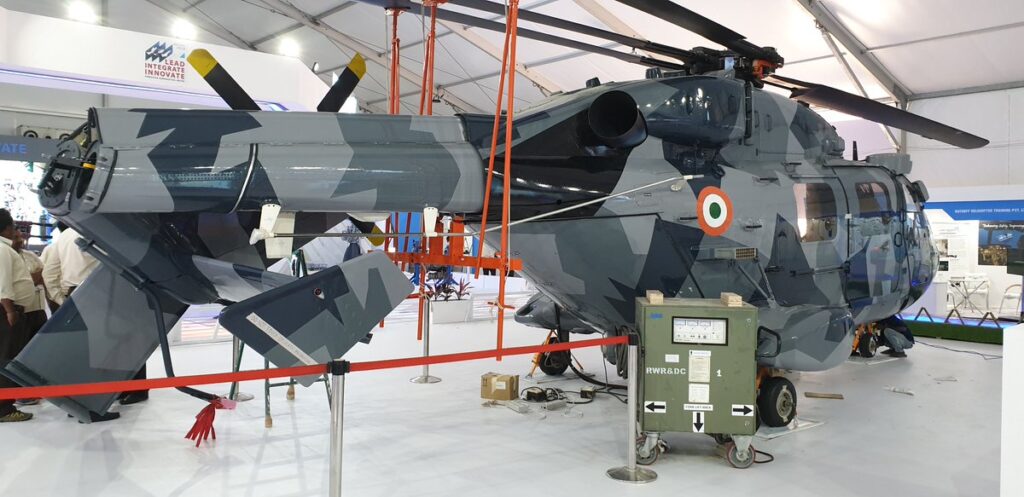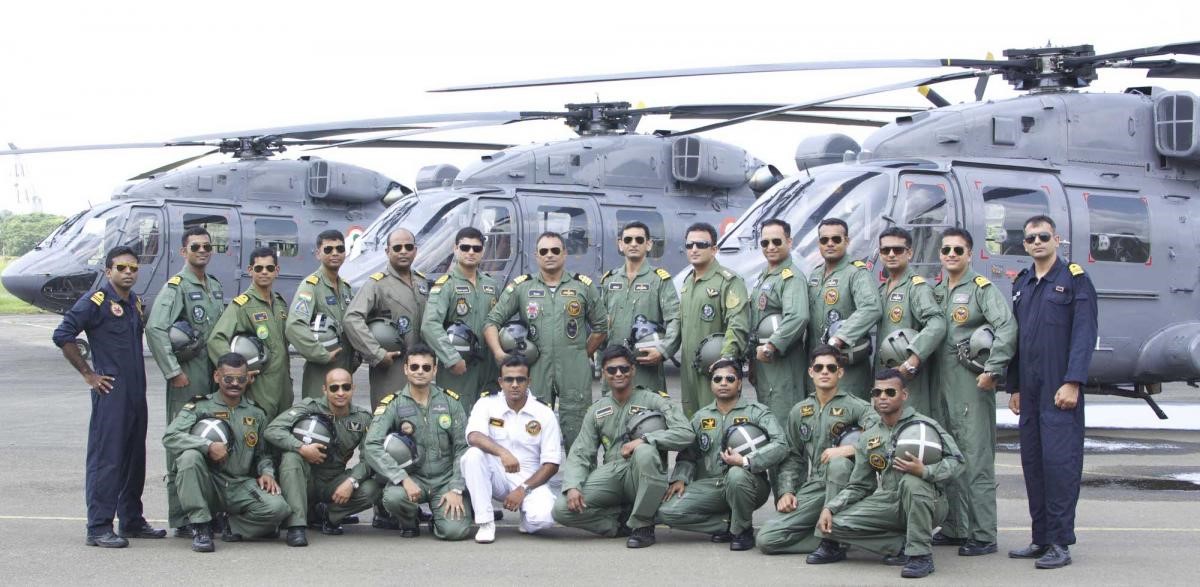The author explores the qualitative requirements set by Indian Navy for the procurement of helicopters for deck operation as well as the reasons why Advanced Light helicopter (ALH) manufactured by Hindustan Aeronautical Limited (HAL) is failing to meet the requirement of Indian Navy.
Introduction
A leading National daily1 has recently reported that the Advanced Light Helicopter (ALH), ‘Dhruv’ offered by Hindustan Aeronautics Limited (HAL) does not meet the qualitative requirements set by Indian Navy for deck operations at sea. Subsequently, Ministry of Defence (MoD) would not be able to consider Advanced Light Helicopter for the ongoing Rs 21000 crore procurement process towards induction of 111 numbers of Naval Utility Helicopters (NUH).
Though the Indian Navy is operating few ALH squadrons2, the present development is a big setback to the ongoing indigenisation programs rolled out by the Government of India. This development has put a huge question mark over the lack of understanding of HAL on navy specific requirements. Search and Rescue (SAR)3 is one of the basic operations being carried out by Indian Navy at sea and an apt aircraft suiting to the SAR requirement was the least expected from HAL by the Indian Navy, which came out to be as a disappointment in the form of ALH.
Constraints
Ministry of Defence (MoD) has not come up officially nor communicated on the subject issue to media on Advanced Light Helicopter. However, it is apparent that there is a problem in accommodating ALH as a contender for the current procurement process. So far, no official communication has come from HAL.
Since we are not privy to the current status of what is happening in the corridors of power, our study is based on the sources available in the public domain as well as the knowledge harnessed by the author while in service.
Areas of Concern
There are a few reasons why the Indian Navy is not enthusiastic about ALH (Dhruv). Let us explore and highlight a few of them.
The deck operations of aircraft are always under constraints view the availability of limited space onboard ships. When ALH was conceived, it was primarily designed for land-based high-altitude operations. Later they got modified suiting to naval operations. That means HAL has never designed a navy specific helicopter from the drawing board.
The rigid rotors are synonymous for helicopters specific to land-based and high-altitude operations. In the case of sea variants, the rotors heads are to be designed to facilitate ‘automatic rotor blade folding’. Besides, the deck area covered by helicopter after folding the rotor blades should be very minimal. The evolution of blade folding should be less intricate and less time consuming4 for the operational readiness of aircraft.
The deck space and the hangar space are always at a premium onboard ships5. The clearance of space between the folded blades of ALH and the hangar walls on board ship is very less. Ground crews are extremely careful while moving ALH into the hangar to avoid blade tips touching the deck walls of the hangar. Rolling and pitching of ships at sea make the matter more challenging. Though HAL had incorporated the manual blade folding on ALH in 2015, one forward unfoldable blade remains as an impediment for smooth movement of aircraft on decks.
ALH takes more time to get airborne compared to other deck borne helicopters. Turning around a shipborne aircraft in time is very critical for deck operations. SAR missions are to be done with a quick response and a delayed launching of aircraft to the search area can be catastrophic. Automatic blade folding system6 is one of the Quality Requirement (QR) which was never attempted by HAL view cost overrun.
Ease of servicing is a very critical factor on-deck operations. Many major maintenance evolutions of ALH are very difficult to execute onboard ships.
Besides, the workmanship of ALH needs substantial improvement. The general finish of airframes and associated parts are not at par with their counterparts. Items with the same part number placed on the same variants of aircraft differ in dimensions. Inter cannibalisation of spares across sister aircraft is a nightmare for maintenance crews in an emergent situation.
Height of aircraft/rotor head of ALH is comparatively more than the same class of aircraft. The deck shutter height is very optimal and hence moving ALH inside small deck hangars is a perilous evolution. Folding of the tail rotor shaft is another comfort which HAL could facilitate on ALH for Indian Navy.
All Up Weight (AUW) of ALH is more than 5.5 tons and hence strengthening of under carriage7 of ALH is one of the key requirements for deck operations. Roll and pitch of ships are beyond the control of naval pilots who come for deck landing onboard ships. ALH needs a stronger undercarriage to overcome eventualities.
HAL has recently claimed that they have picked up the expertise on both automatic blade folding as well as tail rotor folding. But how far HAL can satisfy the Indian Navy needs to be ascertained.

What Next for HAL?
Want of an indigenous deck borne helicopter for SAR operations at sea is a long-drawn demand for Indian Navy. Currently Navy cannot wait for HAL to transcribe a new aircraft. The present requirement of 111 numbers of NUH8 is urgent and are to be sourced from abroad or to be made under licence domestically. Either way, HAL is losing out on time.
There are a few aspects that need to be considered while designing a helicopter for deck operations. HAL has diluted some basic thump rules while developing ALH for the Indian Navy. Foolproof communication including progressive feedback from end-user is a major factor while designing and developing an aircraft.
The next best alternative available for HAL is to go back to the drawing board again. Since HAL has a wealth of experience and learning by developing the current ALH aircraft, the same can be exploited for designing and developing a new one. Reinventing of wheels would be less in the next attempt. HAL can make a fortune against the next purchase order of the Indian Navy.
Collaborating with leading manufacturers of deck borne helicopters is an alternative available for HAL.
The decision from MoD in the coming days would be very crucial for HAL. The private player from abroad who are in the fray are not happy with the tweaking of existing procurement policy.
Learning
The current state of HAL is not so pleasant and needs to be contemplated at the highest level. If ALH is not fitting to the basic SAR needs of the Indian Navy, it is necessary to find why we have failed and what has lead us to the current situation9. Myopic policies and lack of funding by past Governments had put serious constraints on the functioning of HAL. It is wiser for HAL to move on10 by redesigning and developing a new craft for deck operations of Indian Navy. The expertise and core competency harnessed over the last 30 years should not go waist by idling HAL.
Title Image Courtesy: https://www.indiannavy.nic.in/content
Disclaimer: The views and opinions expressed by the author do not necessarily reflect the views of the Government of India and Defence Research and Studies
References
[1] https://economictimes.indiatimes.com/news/defence/
[2] https://www.indiannavy.nic.in/content/alhdhruv
[3] https://www.indiannavy.nic.in/content/indian-navys-search-and-rescue-operations
[5]http://www.defencenews.in/article/Indian-Naval-Helicopter-ALH-Dhruv-Gets-Foldable-Rotors-583194
[7] http://ajaishukla.blogspot.com/2008/09/indian-navys-dhruv-falling-between-two.html
[9]https://www.livefistdefence.com/2020/06/angry-hal-replies-to-ex-indian-navy-chiefs-dhruv-attack.html







